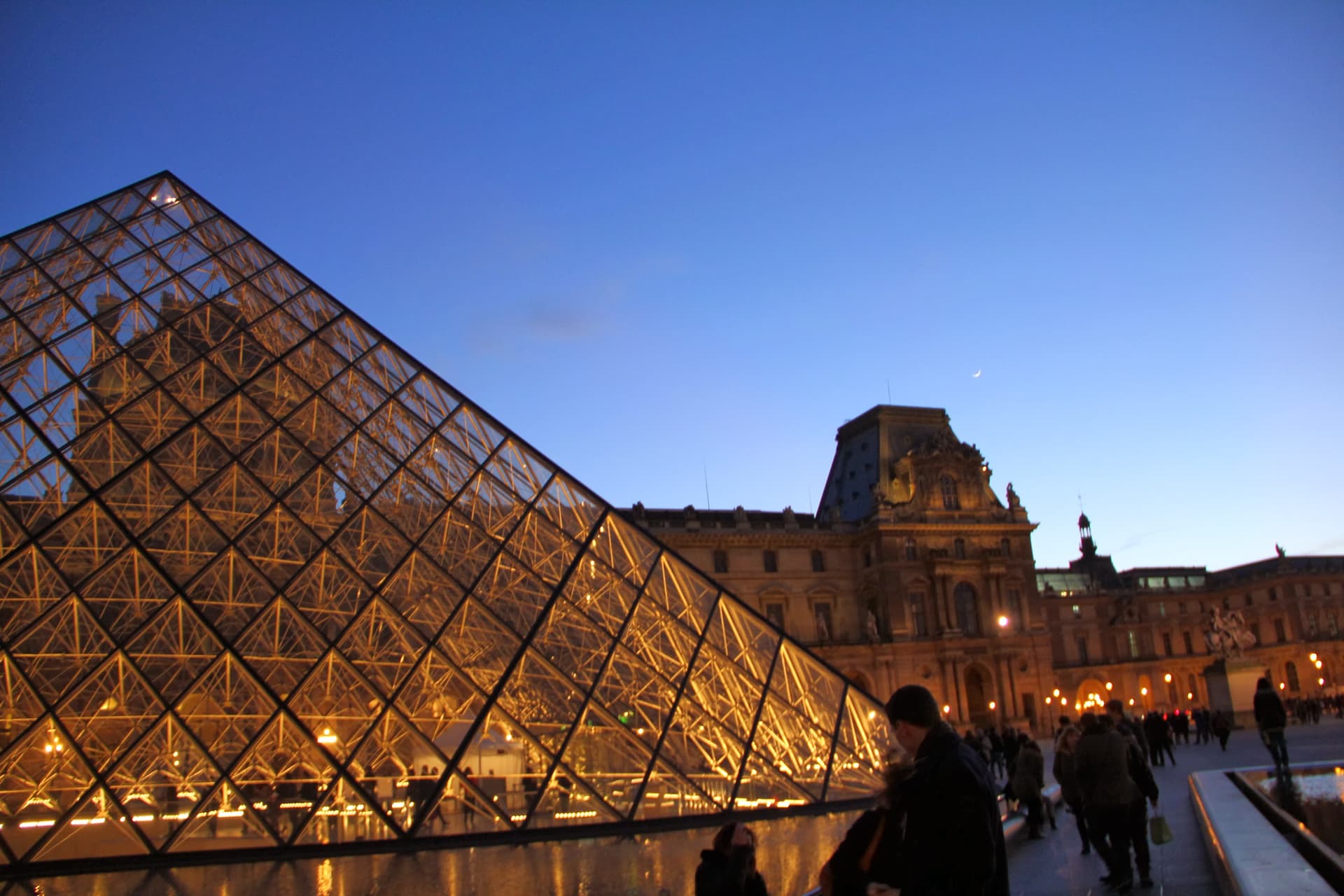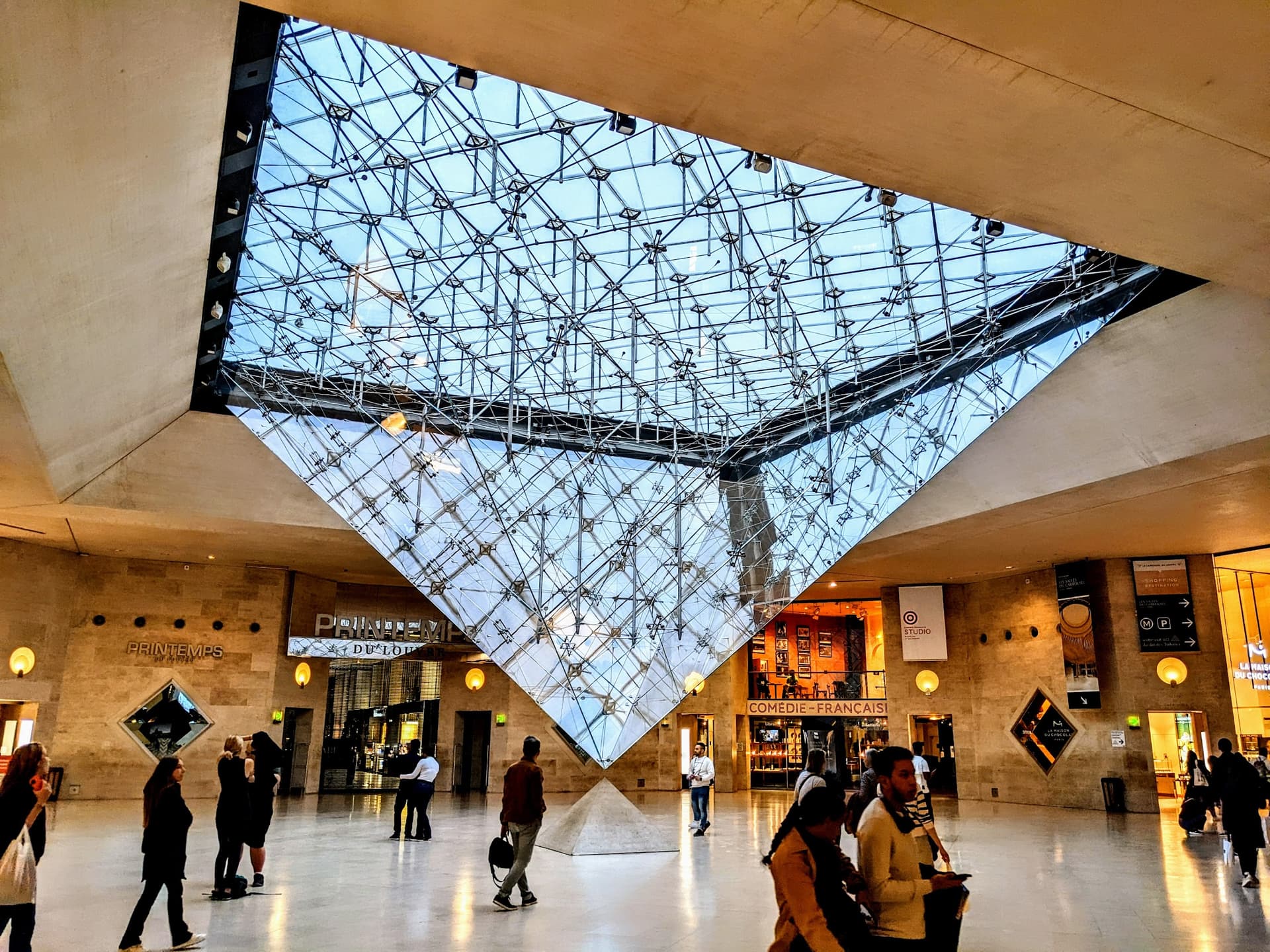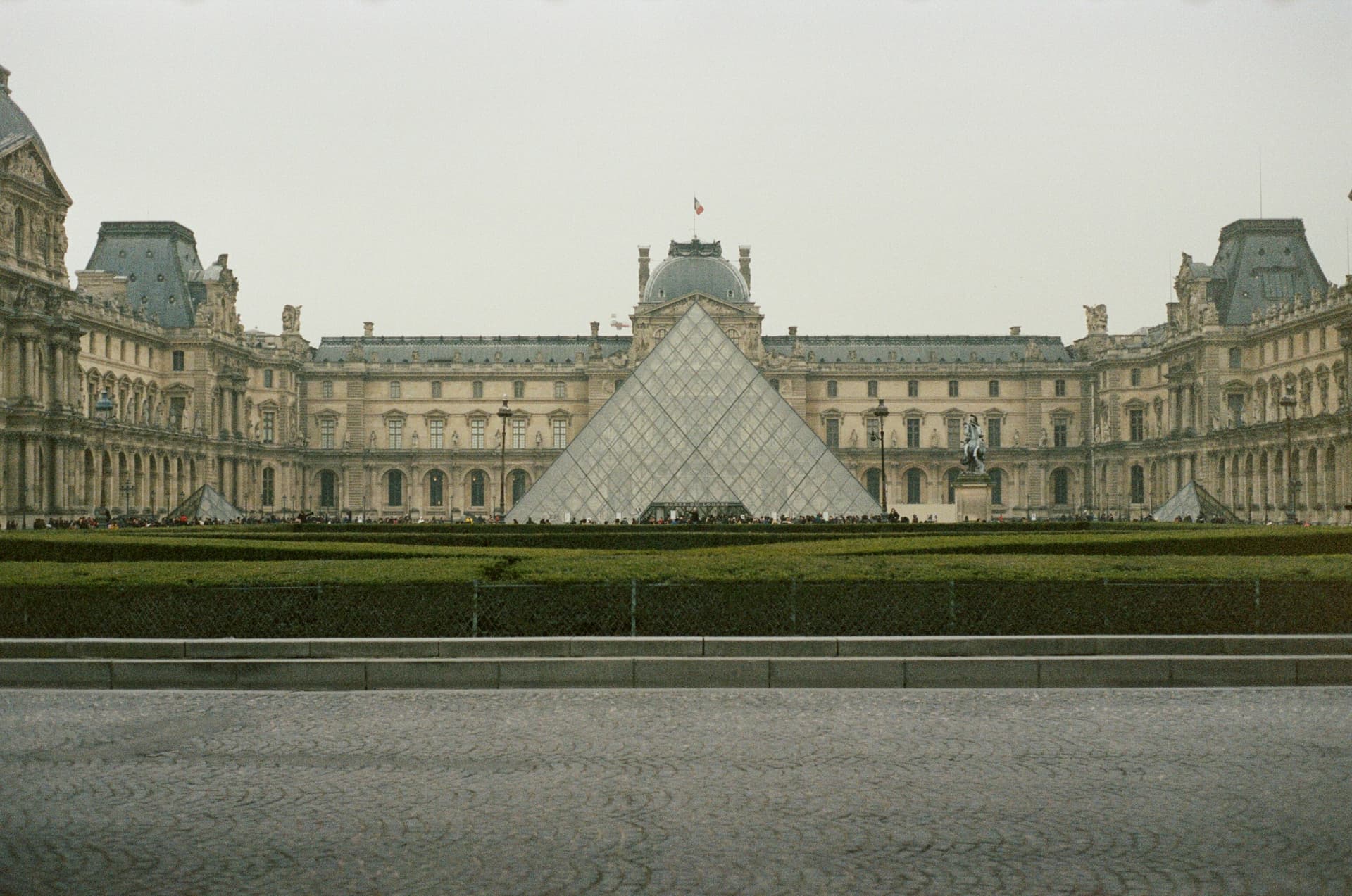Audio GuideLouvre Pyramid
Pyramide du Louvre
Glass pyramid created by I. M. Pei, forming the entranceway into a lower-ground exhibition area.
In the heart of Paris, within the grand courtyard of the Louvre Palace, rises a striking glass pyramid. This modern landmark marks the entrance to the famous Louvre Museum, a place known worldwide for treasures like the Mona Lisa. The pyramid was designed by I. M. Pei, a celebrated architect chosen directly by the French president in the early nineteen eighties. At that time, leaders wanted to expand the museum and welcome the growing crowds. Instead of adding more rooms above ground, Pei made a bold choice: he placed new spaces below the courtyard and topped the entrance with a sleek glass pyramid.
Pei picked the pyramid shape after trying out domes, cubes, and many other designs. He noticed that the classic lines of the Louvre’s old buildings matched best with the simple, sharp profile of a pyramid. The final structure stands about sixty-six feet tall, its sides stretching over ninety-eight feet. Each glass panel was carefully designed to be perfectly clear—no green or blue tint—to reveal the palace behind it. Creating this flawless glass took French engineers nearly two years of research.
When the pyramid was first revealed in the late nineteen eighties, it stirred debate. Many people felt a glass-and-metal pyramid would clash with the museum’s grand Renaissance architecture. Some called it too modern or even out of place. Yet over time, the pyramid became a symbol of Paris itself—bold, bright, and open to the world.
Beneath the surface, three smaller glass pyramids light up the welcoming underground hall, guiding visitors to the museum wings. At night, gentle lights cast cool reflections across the stone and glass, mixing the pulse of new Paris with the city’s long history. Maintaining the pyramid is a challenge. Special robots and mountain-climbing cleaners work atop its slopes to keep each glass pane shining.
Today, millions enter the Louvre through the pyramid each year. Its design eased long lines, giving travelers and locals alike a smoother, more inspiring start to their art journey. The Louvre Pyramid stands as a touchpoint between centuries of art, a place where old and new meet in the heart of Paris.



